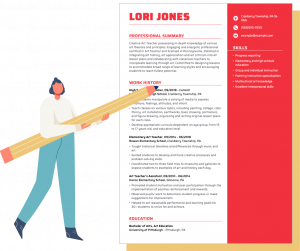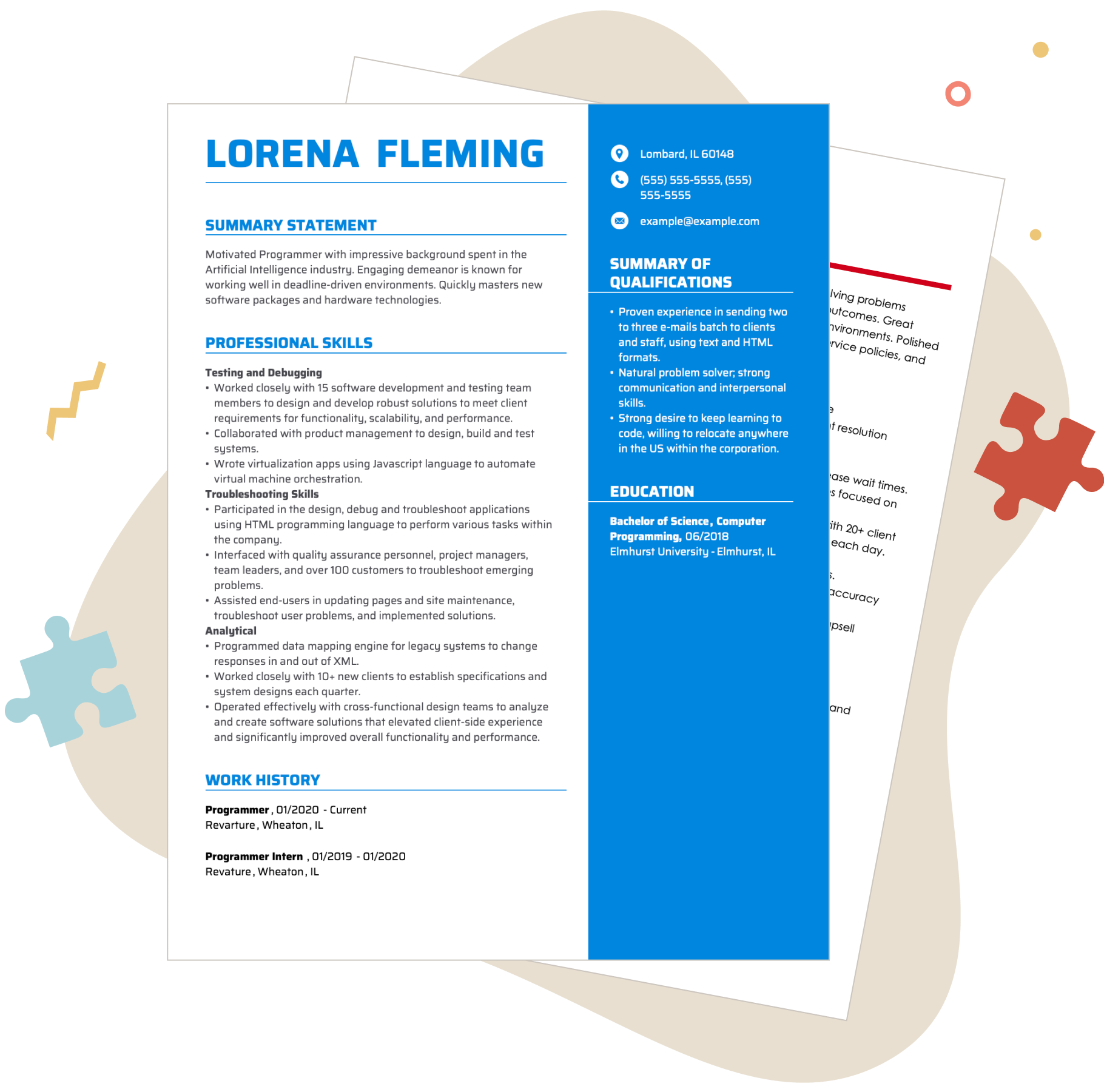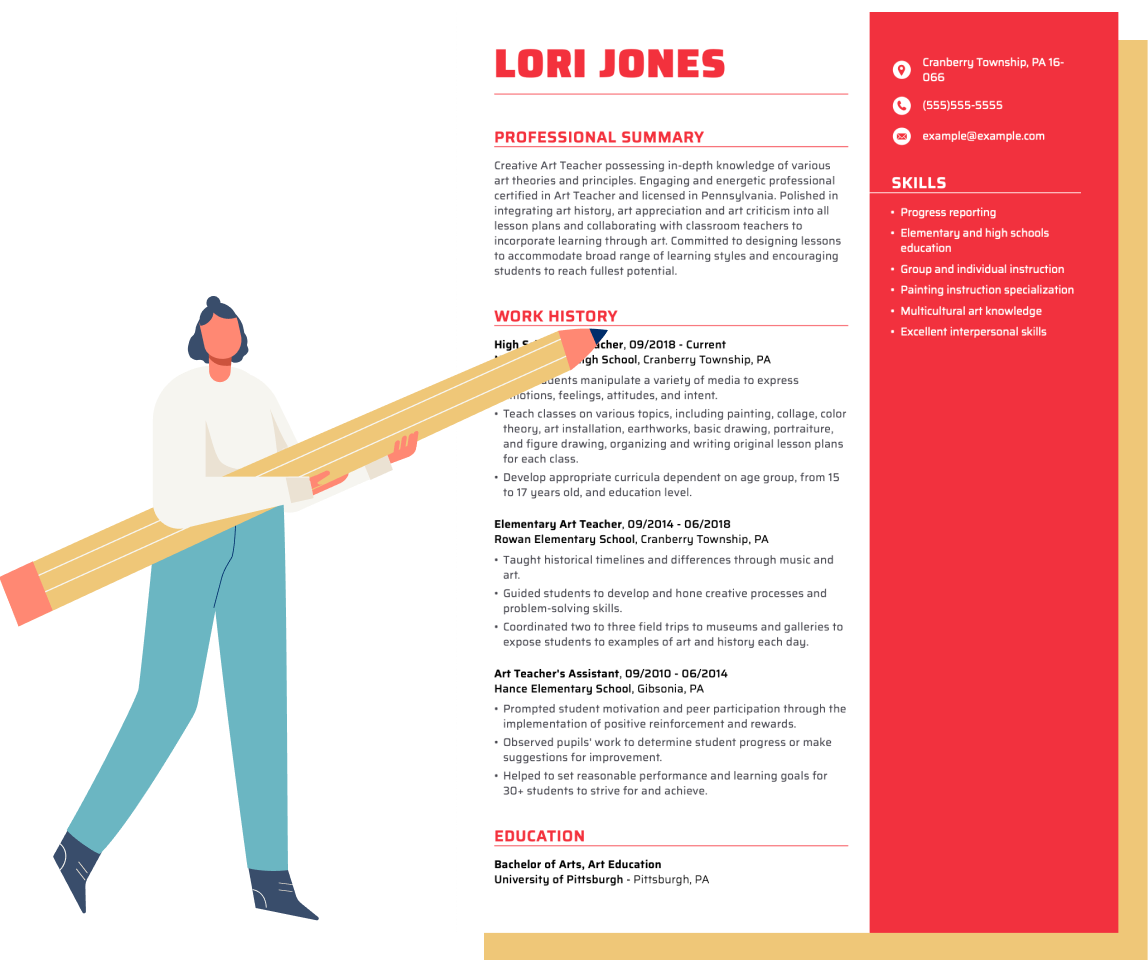Functional Resume Format: Examples & Templates

A functional resume focuses on your skills and qualifications rather than your work history. Read on to learn how to write a functional-style resume using our Resume Builder.
Our customers have been hired at:*Foot Note
What is a functional resume?
The functional resume format highlights your skills over work experience. Your abilities may be grouped under sections like “Summary of Qualifications” and “Relevant Skills,” and they are placed directly above your professional summary or resume objective. The purpose of a functional resume is to show potential employers that you have the skills to get the job done, even if you lack work experience.
Functional resume examples
This example of a skills-based resume highlights summer jobs and volunteer work that shows the job candidate already has plenty of solid experience, even if it’s not full-time employment. Notice how they display soft skills that pertain to customer satisfaction.
When to use the functional resume format
A functional resume is an incredibly useful and valid way to present your qualifications in several circumstances, such as if you’re a first-time job seeker or have employment gaps.
Here’s a closer look at how to use the functional resume format for each situation.
You’re a first-time job seeker or don’t have much work experience.
If you’re low on work experience, emphasize your other job qualifications in a functional resume. For example, you might place your educational experience directly under your resume objective, followed by your skills.
The job places more importance on skills than experience.
If the job doesn’t require heavy experience and places a premium on specific skills, then the functional resume will spotlight your relevant skills. A good technique to emphasize your skills is to categorize them by major areas of expertise (e.g., “Computer Skills,” “Marketing Skills,” or “Soft Skills”), with four to five accomplishments within each area.
You have employment gaps.
The functional resume format downplays employment gaps in your career by focusing on your relevant skills and educational achievements over work history. A functional resume places employment toward the bottom of the resume layout, highlighting your capabilities and downplaying employment dates.
Functional resume templates
Our professionally designed resume templates have been curated to help you showcase your job qualifications effectively so you stand out in today’s competitive job market. Whether you are a student, career changer, or have gaps in your employment history, we have a functional resume template.
Explore our wide range of layouts and formats to find the perfect template that suits your unique career goals and aspirations. Let your resume make a lasting impression with our modern and eye-catching designs.
How to make a functional resume
1. Write a compelling objective statement
Your resume objective is your chance to make the perfect first impression. First, zero in on your top qualifications and feature skills the employer is looking for. For example, if you’re writing a social worker resume and a central requirement is “always putting the client first,” then you might introduce yourself as a “dedicated, client-focused social worker with a keen ability to actively listen, set boundaries and empathize.”
2. Arrange your skills by themes or topics
The functional resume format allows you to group your skills under subcategories and organize them into different sections. This is where the employer will see your professional accomplishments. Add three to five skills per topic.
- Use the “Summary of Qualifications” section to present up to three skills that you’ve learned or used in projects, extracurricular activities or internships related to the job you’re applying for, and briefly expand on them, just like our skills-based resume samples.
- Below your summary of qualifications, add a “Professional Skills” or “Relevant Skills” section to dive further into your abilities. Use that section to display the job-specific abilities you’ve attained through practice, education and repetition, such as Adobe Photoshop, editing, translation or budgeting.
- Create a bulleted list of your soft skills — the personal traits or intangible abilities that are not tied to one specific job or industry, such as interpersonal skills, critical thinking and problem-solving.
3. Include relevant projects and activities in your functional resume
Your work history will look slightly different in the functional style resume from the combination and chronological formats. Whereas the combination and chronological resumes feature an extensive work history section with action verbs and bullet points, a functional resume will only include your job title, the company name and dates of employment.
Still, you can make a good case for your abilities by featuring relevant internships, skills gained from work experience, volunteer work, or extracurricular activities. Providing such details in a functional resume can be as impactful as describing past professional experiences.

4. Keep your functional resume short
Your functional resume should be one page long, especially if you don’t have a lot of work experience. A short resume is easier for recruiters, hiring managers and ATS software to scan your resume for relevance.
Ready to write your resume? Our Resume Builder is the perfect tool to help you structure your skills and achievements in a functional resume format quickly and easily.
Key takeaways
Here are our top five tips from this article:
- Use a resume objective instead of a professional summary on a functional resume.
- Categorize your skills into types or topics and add three to five skills under each category.
- If you don’t have professional work experience in the job you’re applying for, highlight your achievements from relevant volunteer work, extracurricular activities, community service work, or internships.
- Tailor your functional resume for the job you want.
- Be concise. Keep each section brief and your resume to one page.
Write a functional resume in minutes with our Resume Builder
1Stand out with MyPerfectResume’s eye-catching templates! Building an impressive resume has never been easier or faster.
2Don’t get stuck writing about your work experience. Our Resume Builder has pre-written, industry-specific bullet points to create an impressive resume.
3Need your resume in PDF, word, or an image file? You’re in control with multiple export and download options.
4With resume score and resume check, we’ll rate the strength of your resume and guide you through actionable steps to make a resume that showcases your best professional self!
5Copy and paste a job description from any listing and get a job-specific resume match score. We’ll guide you through tailoring your resume for the job!
6With Smart Apply, we’ll help you find an opportunity, customize your resume, create a matching cover letter, and download your documents. We’ll even send you to the web page where you can apply!
Functional resume format FAQ
Who should use the functional resume format?
Use the functional resume format if you are applying for your first job, have gaps in your employment history, or plan to change careers because it highlights your skills and education over your work history.
How should I display my skills in a functional resume format?
We recommend listing your related skills in a functional resume because it helps employers see your most relevant qualifications. It’s acceptable to create headings such as “Soft Skills,” “Programming Skills,” or “Leadership” in your resume template. You might consider grouping your skill set by theme, such as “Technical Skills,” “Customer Service Qualifications,” or “Leadership Credentials.”
How do you write a functional resume?
To write a professional resume in the functional format, start with your contact information, followed by a strong professional statement to outline why you’re the best applicant for the job. After that, focus on your relevant hard, soft and transferable skills.
One way to do so is to create a section highlighting your most relevant skills for the job with descriptions of how you used them. Then, add another to call out specific skills. Review the functional resume example on this page for guidance, and browse our library of sample resumes for more functional resume examples.
What is the difference between the functional resume format and the other resume formats?
The main difference between the functional resume format and other resume formats, such as the chronological and combination formats, is that it focuses on the candidate’s skills and abilities rather than their work history. We’ve detailed the key differences below.
Functional resumes:
- Functional resumes focus on your relevant skills.
- Provide detailed subsections for your skills.
- Include relevant training and nonprofessional activities.
Chronological resumes:
- Chronological resumes highlight work history and achievements.
- Include a relatively brief list of key skills.
- Good fit for those with substantial career experience.
Combination resumes:
- Combination resumes blend skills and work history.
- Emphasize relevant skills and work experiences.
- Ideal for those with a few years of relevant experience or those who are changing careers.
What does a functional resume highlight?
A functional resume highlights your skills, abilities and accomplishments rather than your work history. Functional resumes are organized by skill categories, such as communication, leadership or project management.
This format is ideal for job seekers who have gaps in their work history, are changing careers or have limited work experience. It allows them to showcase their relevant skills and accomplishments without focusing on their work history.
Why might you choose to create a functional resume?
You might choose to create a functional resume if you have one or more of the following:
- Gaps in your work history: Functional resumes effectively highlight skills and achievements when you have gaps in your work history. This format lets you focus on your skills and accomplishments rather than your work history.
- Changing careers: If you are changing careers, a functional resume can help you emphasize the skills and experiences you have that are relevant to the new industry or position you are seeking.
- Limited experience: If you are a recent graduate or have limited work experience, a functional resume can help you highlight your strengths and skills, which can help you stand out from other candidates.
- Highlighting skills: If the position you are applying for requires specific skills, a functional resume can help you showcase those skills and how you have used them in your past experiences.
A functional resume is an effective format for job seekers who want to highlight their skills and accomplishments and de-emphasize their work history.
How do you make an ATS-friendly functional resume?
An ATS-friendly functional resume is a resume that has been optimized to pass through Applicant Tracking Systems (ATS). We recommend using our ATS resume checker to scan your resume for common errors that might prevent it from passing automated resume screening software.
Here are some tips for creating an ATS-friendly functional resume:
- Use relevant keywords: Use keywords that are relevant to the job you are applying for throughout your resume.
- Use clear headings: Use clear headings to organize your resume into sections so that the ATS system can easily identify the different sections of your resume.
- Use simple formatting: Use simple formatting and avoid using tables, graphics or images, as ATS systems may have difficulty reading them.
- Use a standard font: Use a standard font such as Times New Roman, Arial or Calibri, as these fonts are easily readable by ATS systems.
- Avoid using abbreviations: Avoid using abbreviations that the ATS system may not recognize.
- Include relevant experience: Include relevant experience in your resume, but make sure to highlight your skills and accomplishments rather than your work history.
By following these tips, you can create an ATS-friendly functional resume that will increase your chances of getting noticed by employers and landing an interview.
How we reviewed this article
Since 2012, we have helped more than 11 million job seekers. We want to make your career journey accessible and manageable through our services and Career Center’s how-to guides and tips. In our commitment to bring you a transparent process, we present our Editorial Process.
Sources
- Kent State University. Article. Functional Resume Format
- HR Dive. Article. O’Donnell, Riia. Eye tracking study shows recruiters look at resumes for 7 seconds
- Coursera. Article. Functional Resume Guide: Template and Tips

